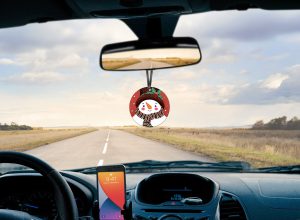 As a longtime Florida car accident lawyer, I’ve come across many individuals who were tricked into believing that if they were involved in a crash, they had nothing to worry about because “I have full coverage.”
As a longtime Florida car accident lawyer, I’ve come across many individuals who were tricked into believing that if they were involved in a crash, they had nothing to worry about because “I have full coverage.”
Unfortunately, in the auto insurance world, “full coverage” doesn’t go half as far as most people think. And even in situations with decent insurance, it can be a tooth-and-nail battle to compel the insurance company to pay their fair share.
In Florida, people have an especially warped view of how much might be covered because of the fact that we are a no-fault auto insurance state. The (erroneous) presumption is that insurance is going to cover damages, no matter who is at-fault. Although it is true that Florida requires personal injury protection (PIP) coverage of every vehicle owner, some (like motorcyclists) are expressly excluded. Plus, it only covers up to $10,000 in damages – and sometimes even getting them to pay that requires negotiation.
What Exactly Does it Mean to Have “Full Coverage” in Florida?
If you’re involved in a crash with another driver who assures you, “Don’t worry – I’m fully covered,” you shouldn’t assume that everything will be covered and that it’s ok to relax. For one thing, Florida is a no-fault state, meaning you can’t collect damages from the other motorist at all unless your injuries meet the serious injury threshold criteria, outlined in F.S. 627.737. You’d also have to prove the fault of the other driver. Over the years we have learned that insurance companies often don’t do the right thing and fairly pay claims; if they did our law firm would have little purpose and would likely be out of a job.
But beyond that, “full coverage” simply means that one has the bare minimum coverage legally required by Florida law – and that ain’t much. Specifically: Continue reading
 Sparkling decor is part of the magic of the holiday season. But as a Fort Myers injury lawyer, I’d strongly advise you to keep it away from your steering wheel.
Sparkling decor is part of the magic of the holiday season. But as a Fort Myers injury lawyer, I’d strongly advise you to keep it away from your steering wheel.




 Florida Personal Injury Lawyer Blog
Florida Personal Injury Lawyer Blog



 Florida premises liability law places certain legal responsibilities on property owners to use reasonable care in protecting lawful guests from foreseeable dangers. Trespassers, however, are given very few protections, aside from the duty to avoid willful harm. The primary exception, as our
Florida premises liability law places certain legal responsibilities on property owners to use reasonable care in protecting lawful guests from foreseeable dangers. Trespassers, however, are given very few protections, aside from the duty to avoid willful harm. The primary exception, as our  As a longtime
As a longtime  Every Florida injury lawsuit is different, and the law is always evolving. That’s why when you ask any lawyer a seemingly straightforward question, you almost always get: “It depends.”
Every Florida injury lawsuit is different, and the law is always evolving. That’s why when you ask any lawyer a seemingly straightforward question, you almost always get: “It depends.”







